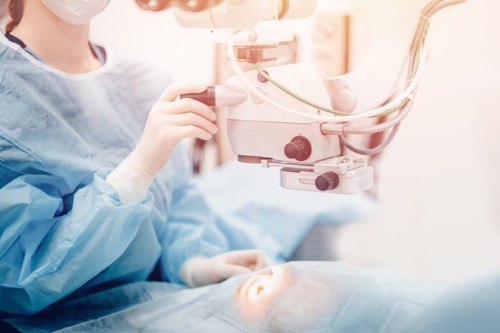2025-06-24 00:00:00Z

Considering LASIK but feeling unsure about lasers near your eyes? You're not alone — many patients worry about the risks, but what they don’t always realize is how far LASIK technology has come.
At VisualEyes Optometrists, we stay up to date on advancements in vision correction, and we want you to know: today’s LASIK is safer, faster, and more precise than ever before — thanks to cutting-edge technology and personalized treatment planning.
Here’s how modern LASIK systems are making laser vision correction smarter and safer for patients like you.
Traditional LASIK corrected basic refractive errors (like nearsightedness or astigmatism), but today’s wavefront-guided technology goes further by creating a 3D map of your eye’s unique optical imperfections — down to microscopic irregularities.
This personalized data allows your surgeon to:
Earlier LASIK methods used a mechanical blade (microkeratome) to create the flap on your cornea. Today, most surgeons use femtosecond lasers — ultra-fast lasers that create precise, bladeless incisions.
Benefits include:
Modern LASIK lasers come equipped with high-speed eye-tracking technology that follows even the slightest eye movement during surgery. If you shift, blink, or move, the laser automatically adjusts in real time or pauses altogether — ensuring treatment stays exactly where it’s needed.
This means:
Newer excimer lasers (used to reshape the cornea) are more focused and deliver smoother, more uniform treatments, which:
Thanks to these advancements, most LASIK patients experience:
A freedom from glasses or contacts that feels truly life-changing
At VisualEyes Optometrists, we work closely with trusted LASIK surgeons to help guide your decision. We offer pre-operative screenings and post-operative care — so you’re supported at every stage of your LASIK journey.
(703) 417-9316
(703) 671-1188
(703) 764-3937
(703) 804-0355
(Pentagon ID Holders Only)
5876 Kingstowne Center Alexandria, VA 22315
Visit Website Make Appointment4018 Campbell Avenue Arlington, VA 22206
Visit Website Make Appointment9600 H. Main Street Fairfax, VA 22031
Visit Website Make Appointment1 South Rotary Road, STE 2C113
Arlington VA 22202
(For Authorized Pentagon Personnel Only)
Copyright 2025 VisualEyes Optometry. All rights reserved. Website Designed and Maintained by WSI Pro Marketing.
